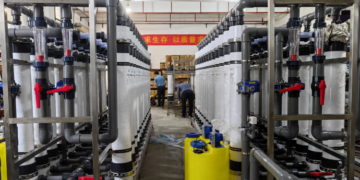Optic fiber welding is a critical process in modern telecommunications, ensuring high-quality data transmission over long distances. The phrase “both an art and a science” perfectly describes the complexity involved in fiber optic splicing. On the surface, the process appears to be a straightforward technical procedure—aligning and fusing two fiber ends. However, the deeper one delves into this process, the more evident it becomes that skill, precision, experience, and a keen eye for detail play a role just as significant as the scientific principles governing it.
To truly understand why optic fiber welding is both an art and a science, we must break it down into the underlying principles that make it scientific and the expertise that makes it an art form.
The Science Behind Optic Fiber Welding
Science is the foundation of optic fiber welding. It involves physical laws, advanced technology, and precise measurements to achieve a nearly perfect fusion of two fiber ends. Below are the scientific aspects that govern this process:
1. Molecular Bonding and Heat Application
Optic fiber welding is based on molecular bonding. Two optical fiber ends are heated and fused together using a specialized fusion splicer. The science behind this involves understanding how high-intensity electric arcs or laser heat sources influence the molecular structure of glass fibers.
- Material Composition: Optical fibers are primarily made of silica glass, which melts at high temperatures (around 2000°C).
- Thermal Expansion: Improper heat application can cause expansion mismatches, leading to signal loss.
- Surface Tension Effects: At microscopic levels, surface tension influences how two fibers bond together when melted.
2. Light Propagation and Signal Integrity
The primary function of optical fibers is to transmit light signals with minimal loss. A successful weld ensures that:
- Light continues its journey with minimal reflection or scattering.
- No significant increase in optical attenuation (loss of signal strength).
- The refractive index of the fiber core remains unchanged to maintain transmission efficiency.
The welding process must account for waveguide properties, ensuring that light signals remain coherent and undistorted when passing through the fused joint.
3. Precision Alignment and Microscopic Adjustments
Modern fiber splicing machines use high-precision cameras and alignment algorithms to ensure:
- Core Alignment: The fiber’s core must be aligned within nanometers to prevent signal loss.
- Loss Estimation Technology: Splicers use laser-based analysis to estimate how much loss the weld might introduce.
Microscopic misalignments can have significant consequences, as even a small deviation can lead to reflections, refractions, or dispersion, impacting data transmission quality.
The Art of Optic Fiber Welding
While science dictates the fundamental process, the art of optic fiber welding lies in the skill and experience of the technician performing the fusion. Despite advanced machinery, human expertise remains indispensable in ensuring a strong, loss-free weld.
1. Human Judgment and Hands-on Experience
Even with fully automated fusion splicers, human intervention is often required. An experienced technician:
- Interprets loss estimation results better than a machine algorithm alone.
- Adjusts splice settings based on environmental conditions (temperature, humidity, etc.).
- Diagnoses and fixes irregularities that a machine may overlook, such as contaminants on fiber ends.
A skilled technician’s experience helps in adjusting fusion parameters to achieve the best possible weld.
2. Environmental Adaptation and Real-world Conditions
Unlike in controlled lab settings, real-world fiber welding occurs in various environments, from underground tunnels to high-altitude transmission towers. Each setting presents unique challenges:
- Humidity and Dust: Can affect the quality of the weld.
- Temperature Variations: Impact the expansion and contraction of fiber material.
- Mechanical Stress on the Joint: Requires technicians to reinforce spliced areas for durability.
Adapting to these conditions while ensuring a seamless weld is an art in itself.
3. Troubleshooting and Problem Solving
Not all fiber optic welding jobs go smoothly. There are various issues that technicians need to diagnose and resolve on the spot:
- Air Bubbles in the Fusion Joint: These can lead to increased attenuation.
- Incorrect Arc Power Settings: Can cause excess melting or incomplete fusing.
- Dirty or Improperly Cleaved Fibers: If the fiber end faces aren’t perfectly flat, the fusion won’t be effective.
The ability to troubleshoot effectively and make real-time adjustments is where human expertise surpasses machine automation.
4. The Craft of Cleaving and Preparing Fiber Ends
A key part of achieving a perfect fiber weld is preparing the fiber ends correctly. This process, called cleaving, involves cutting the fiber at a precise 90-degree angle.
- A well-cleaved fiber ensures that the two fiber ends meet perfectly, allowing optimal fusion.
- A poorly cleaved fiber leads to gaps, which can cause high signal loss.
Despite machines assisting in the cleaving process, manual intervention and quality checks are often necessary.
Why Both Science and Art Are Essential
Neither the scientific principles nor the human expertise alone can guarantee a successful optic fiber weld. The process requires a perfect balance between:
- Technical precision governed by physics and material science.
- Artistic skill involving judgment, adaptability, and experience.
A well-trained fiber optic technician blends these aspects to ensure that fiber networks operate with maximum efficiency. The best welders are those who understand the science while mastering the artistry of the process.
Conclusion: A Perfect Fusion of Knowledge and Skill
Optic fiber welding is a rare combination of exact science and refined craftsmanship. The principles of light transmission, material physics, and microscopic alignment are deeply rooted in science. However, the execution—ensuring a strong, low-loss weld in diverse environments—demands experience, adaptability, and problem-solving skills, making it an art.
This fusion of technical expertise and human intuition is what makes optic fiber welding indispensable in the telecommunications industry. Every successful fiber optic connection we rely on today is a testament to both the scientific precision and the artistry of the technicians who make it possible.

























